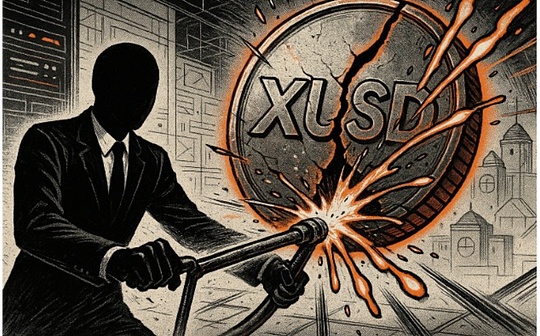
Author: Haotian; Source: X, @tmel0211
Canton Network has been very popular in the RWA circuit recently.It raised US$135 million in financing and was endorsed by Wall Street giants such as Goldman Sachs, HSBC and DTCC, claiming to be a “global financial operating system”.Another god-level narrative project of Wall Street Narrative?Let’s talk about my views:
1) There are indeed differences between Canton and most RWAs on the market..In the usual sense, RWA is essentially a synthetic asset.The issuer is still a traditional financial intermediary, and the chain is just covered with an extra layer of blockchain vest, which is equivalent to moving off-chain assets to the chain through the mapping mechanism.
Canton’s gameplay is different: It allows the issuer of the asset source to issue directly on the chain.What’s the meaning?For example, DTCC (U.S. Securities Depository and Clearing Corporation) issues U.S. Treasury bonds directly on Canton. The smart contract itself is a legal contract. A direct contractual relationship is established between the buyer and the issuer, without the need for an intermediary to earn the price difference.
This is not simple “tokenization”, but “nativeization”.Although it sounds like a different way of saying it, the underlying logic is completely different.Currently, $12 billion of regulatory-grade assets have been originally issued on Canton, covering bonds, currency funds, alternative investment funds, etc.
2) Let’s talk about their main “institutional privacy” card.Recently, Zcash’s outstanding secondary performance has ignited everyone’s enthusiasm for the privacy track.But to be honest, Canton’s privacy attributes are not quite the same.
Zcash is aimed at public payment scenarios and emphasizes “optional privacy”. Users can choose to be anonymous or transparent.Canton focuses on regulated institutional business, emphasizing “selective visibility/on-demand disclosure”. Both parties to the transaction keep each other confidential, but regulatory agencies can audit at any time when needed, and the entire compliance evidence collection process is traceable..
This set of designs is tailor-made to adapt to regulatory frameworks such as the SEC, EU, and GDPR.To put it bluntly, we need both privacy and compliance, and find a balance between the two..
3) What is the current actual adoption status of Canton?Currently, there are 28,000 registered wallets in Canton, mainly institutional accounts.Seeing this number, you should understand: Canton is a ToB institutional-level infrastructure, and it is still far away from large-scale C-side applications?
It shows that the Canton team knows what they are doing:First, get through the most difficult institutional-level infrastructure, and then extend it to the C-side..This path is actually quite smart.
Why?Because the institutional market is a scarce resource with high entry barriers, deep relationship networks, and strict regulatory requirements, it can be regarded as the real moat for the project.Canton chose to conquer B-side institutions first and then expand to the C-side market.It is essentially a dimensionality reduction strategy.In fact, with the support of this strategy, Canton’s ecological activities have become active recently.
Of course, even so, Canton’s narrative ceiling will be limited by “institutional adoption” for a long time.When we speculate in coins or ecology, we must know where the ceiling of the project is. Obviously,Canton’s value growth curve is necessarily a slow but steady “institutional adoption” curve.
above.
Overall, I think Canton represents a relatively pragmatic direction for the RWA track, but how far it can go depends on two variables:One is the speed of evolution of regulatory policies, and the other is the determination of traditional financial giants to embrace on-chain technology.







